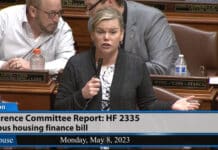Minneapolis, MN- The percent of people who ride the light rail without paying is rising as total ridership is also increasing.
Numbers that will be released at Wednesday’s Met Council Audit Committee meeting show that between 8.3 and 10.4 percent of all riders of the Green and Blue Lines avoid paying the fare, reports the Star Tribune. This is up from a range of 3.4 to 4.7 percent when the Light Rail Fare Evasion Audit was conducted two years prior.
1,470 citations have been issued by Metro Transit in the past year, along with more than 8,000 warnings.
Metro Transit’s 2015 ridership figures totaled 10,620,284 rides on the Blue Line, and 12,383,173 rides on the Green Line. Metro Transit uses automatic overhead sensors to estimate total ridership. The total number of riders who failed to pay for their fare is not as easily determined. Using the estimates from the audit though, between 1,909,286 and 2,392,359 people avoided paying for the light rail.
With a non-discounted, non-rush hour light rail ticket costing $1.75, it can be estimated that Metro Transit lost out on about $3.34 million to $4.19 million of revenue from these freeloaders. No lost revenue estimate was made in this year’s audit report. However the prior report, with less total ridership and a lower estimate of fair cheats, estimated losses between $816,400 and $1,466,400 due to unpaid fares.
All of this comes with a mix of enforcement policy changes. All first time offenders have been given a warning since spring of this year, reports the Star Tribune. This may make riders more likely to risk getting caught knowing they will not face a fine the first time. Conversely, police officers have stepped up their fare enforcement since the last audit came out in 2014. Two years ago, 1.4 million people were asked if they had paid for their fare. In 2016, January through September, 1.6 million people have been asked if they paid their fare. That number is likely to eclipse 2 million by year’s end.
The audit also concluded that the fare evasion rate in the Twin Cities is on par with similar transit systems in the United States, Canada, and Australia.












![By basic_sounds [CC BY-SA 2.0 (https://creativecommons.org/licenses/by-sa/2.0)], via Wikimedia Commons By basic_sounds [CC BY-SA 2.0 (https://creativecommons.org/licenses/by-sa/2.0)], via Wikimedia Commons](https://alphanews.org/wp-content/uploads/2016/10/Dufferin_TTC_Station_4433575365-696x522.jpg)





